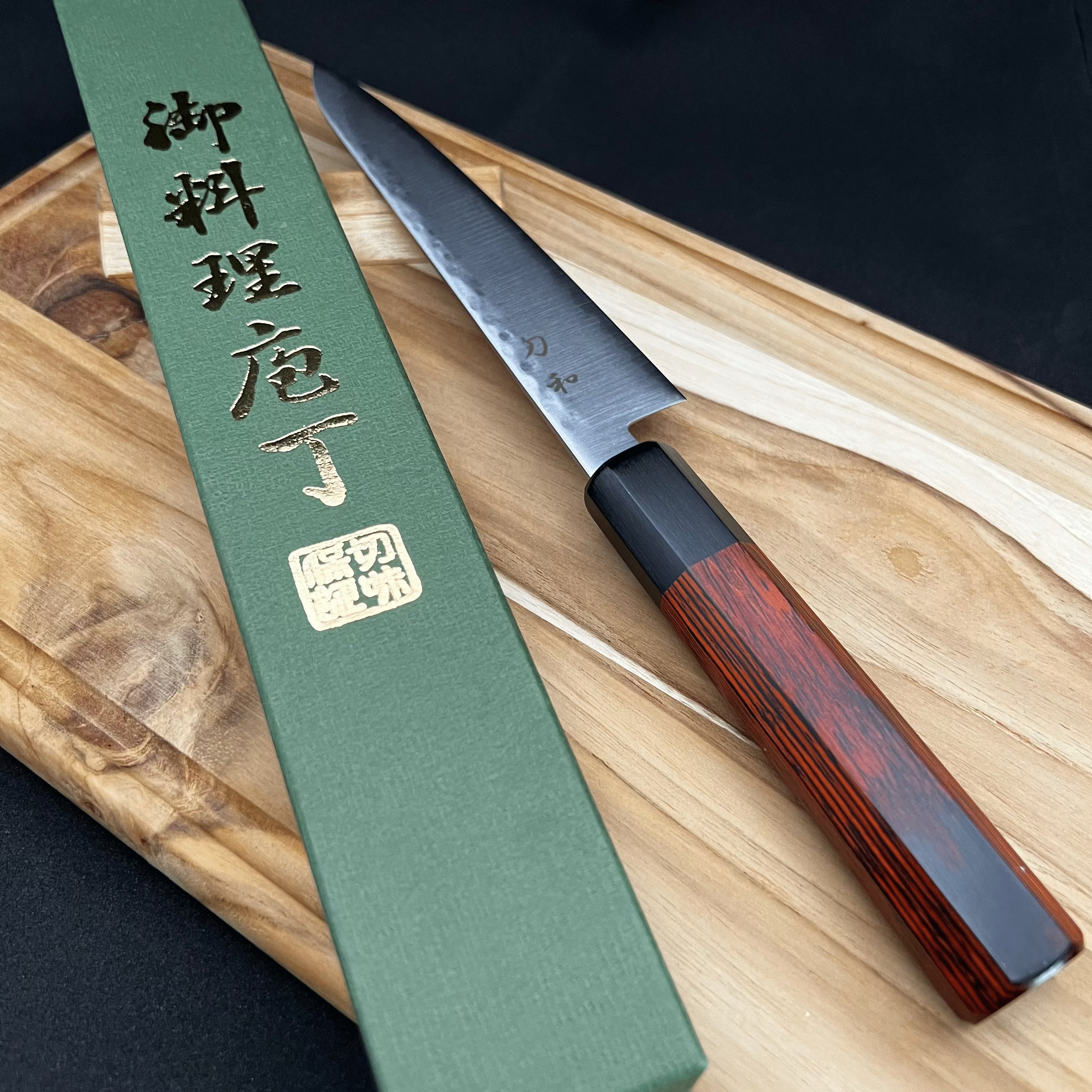
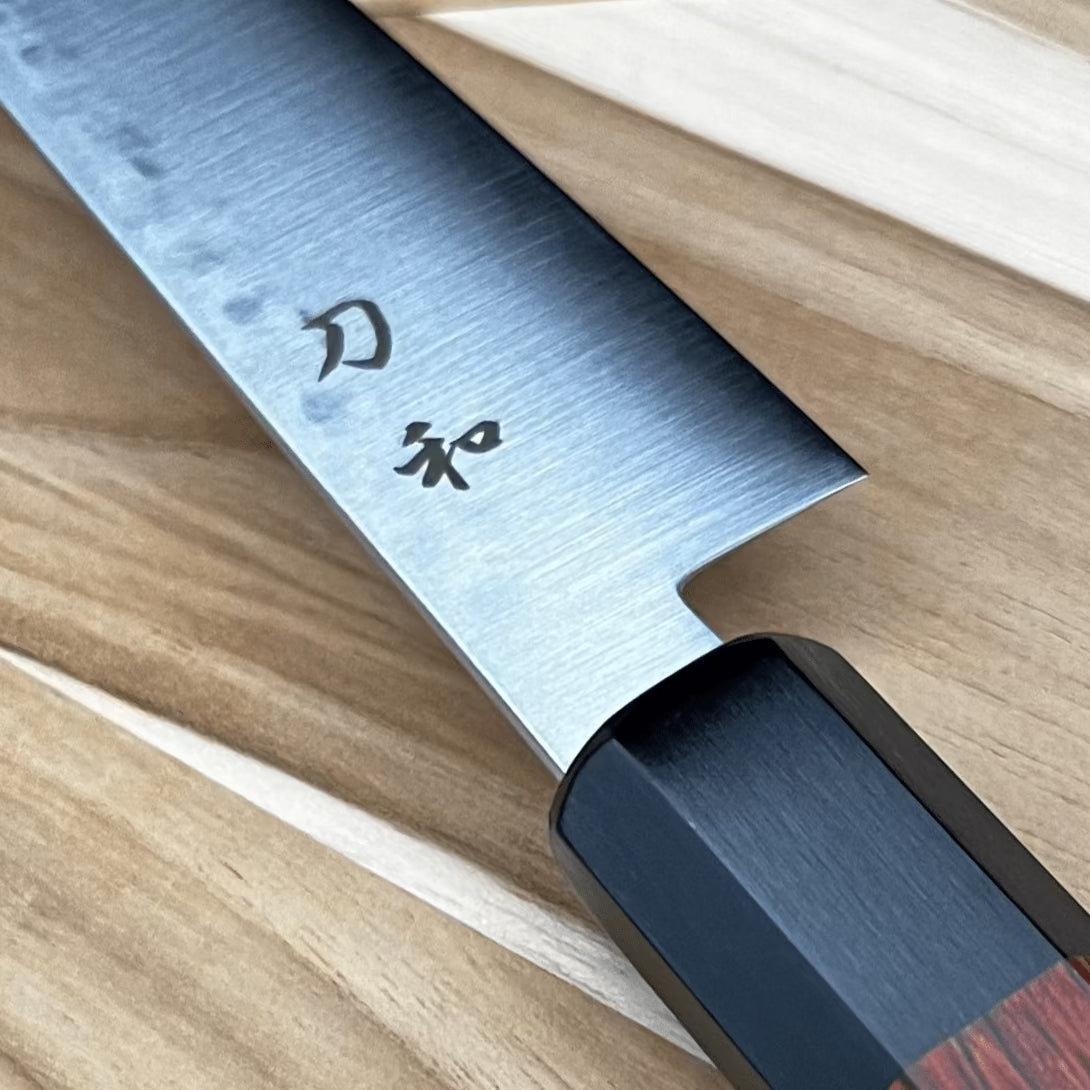
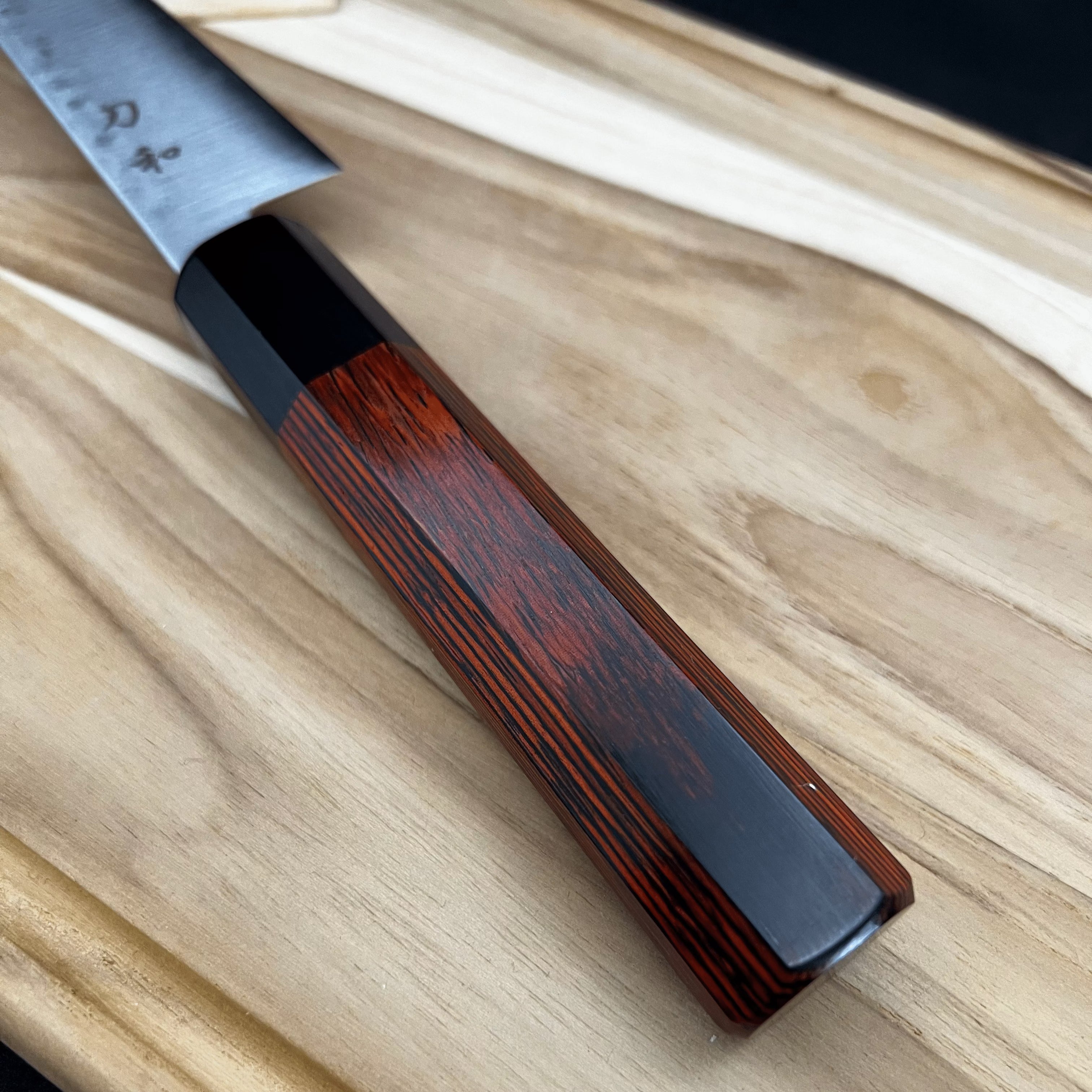
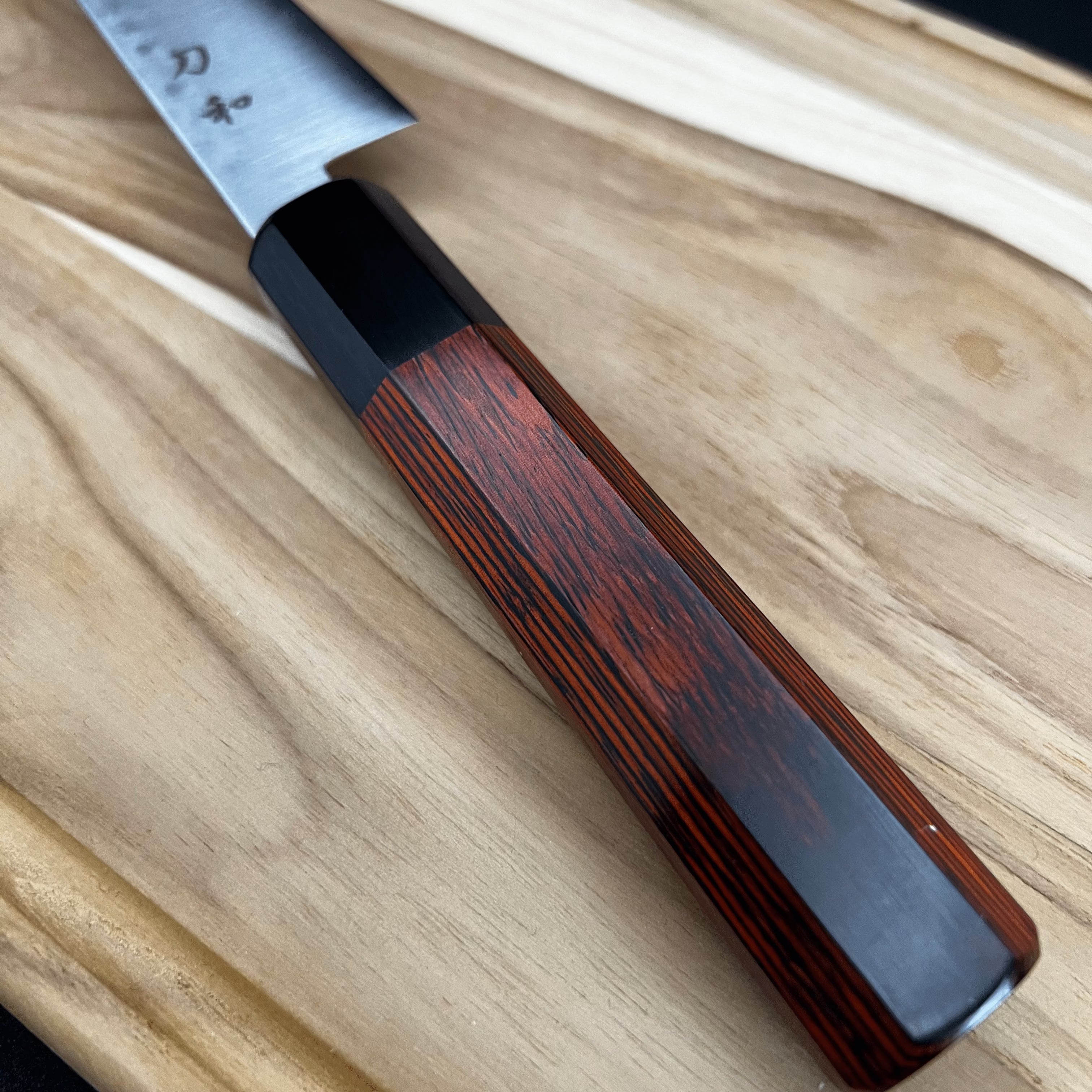
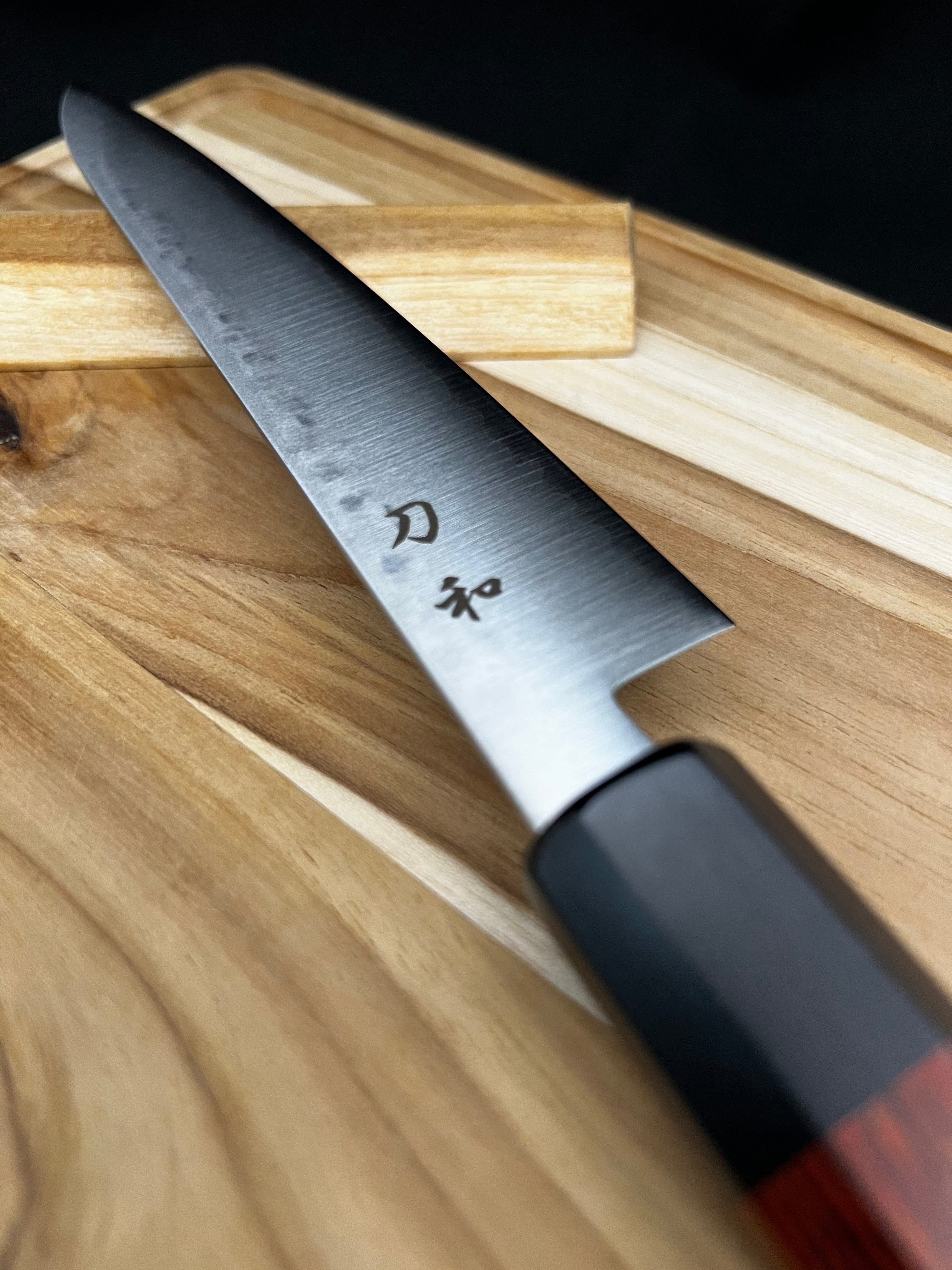
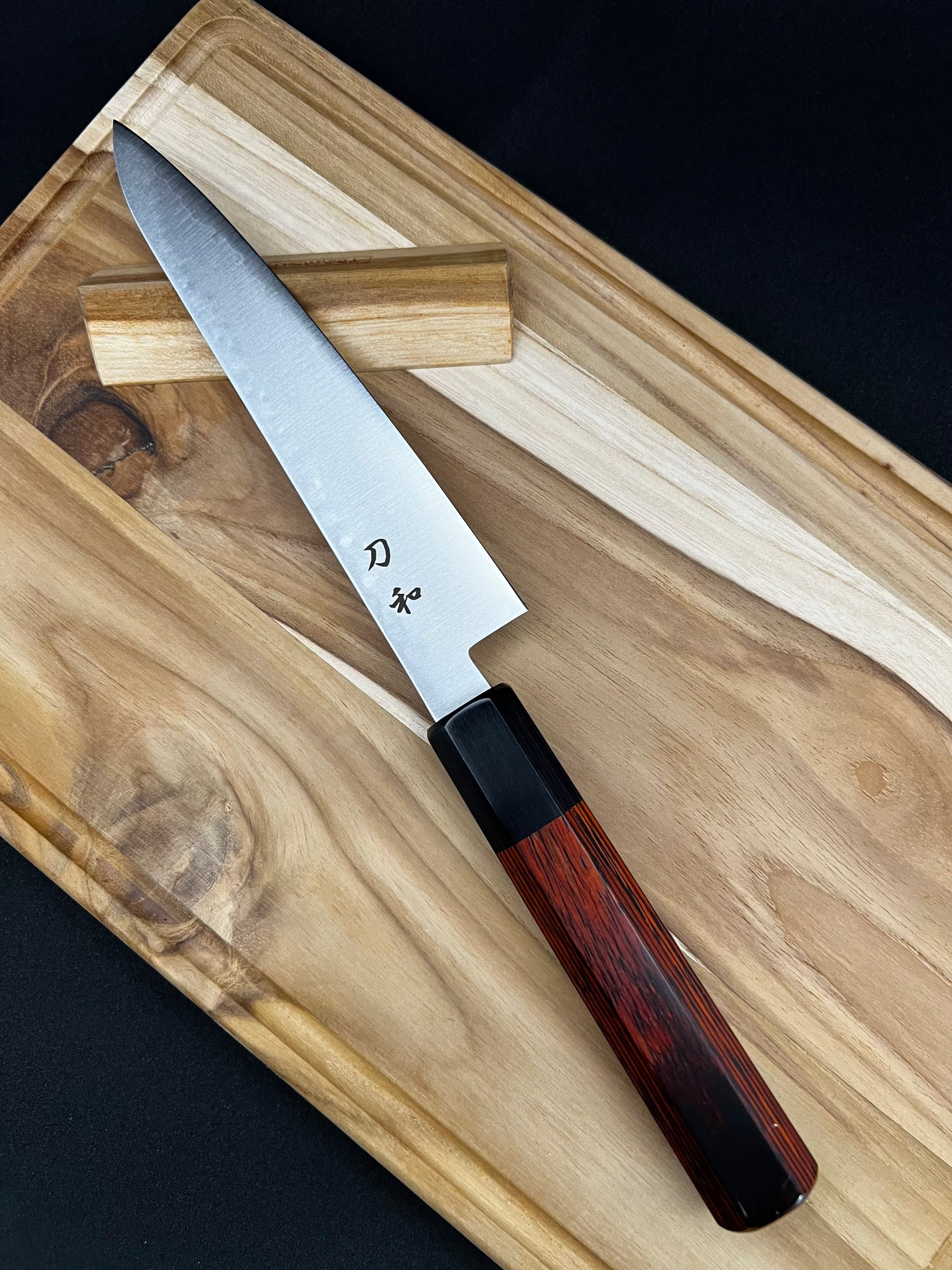
Sword Japanese Hammer-Eye Octagonal Petty Knife – 5.9 inches (15 cm), Red
Fast & Secure Delivery from Japan to your Door [Shipping Policy]
Shop Safely with Encrypted Checkout and Verified Gateways.
Pairs well with

Sword Japanese Hammer-Eye Octagonal Petty Knife – 5.9 inches (15 cm), Red
If you have any questions, you are always welcome to contact us. We'll get back to you as soon as possible, within 24 hours on weekdays.
-
Shipping Information
Use this text to answer questions in as much detail as possible for your customers.
-
Customer Support
Use this text to answer questions in as much detail as possible for your customers.
-
FAQ’s
Use this text to answer questions in as much detail as possible for your customers.
-
Contact Us
Use this text to answer questions in as much detail as possible for your customers.
Combining time-honored Japanese forging techniques with modern performance, this red VG5 utility knife is a compact yet powerful tool made for versatile, everyday use. Handcrafted in Japan, it’s ideal for precision tasks like trimming meats, slicing vegetables, or filleting fish with expert control.
The 5.9 in (15 cm) blade is crafted from high-grade VG5 steel, providing excellent edge retention while remaining easy to sharpen. Its three-layered construction enhances durability and offers a remarkably balanced feel, perfect for intricate slicing.
A hand-hammered finish along the blade helps reduce drag and minimizes food sticking, ensuring clean, effortless cuts every time. The shorter, agile profile is designed for refined control, allowing you to maneuver easily around bones, joints, and delicate produce.
The vivid red handle adds a bold, eye-catching accent to your kitchen while offering a secure, ergonomic grip thanks to its traditional octagonal shape.
Key Features:
-
Razor-sharp edge for detailed, precise slicing
-
5.9 inches (15 cm) blade length for nimble, controlled cuts
-
Hand-hammered finish promotes better food release
-
Octagonal red handle provides a secure, comfortable grip
-
Perfect for fine slicing, trimming, and intricate kitchen work
Compared to larger chef’s knives, this utility knife offers enhanced precision for close, detailed tasks—making it an indispensable tool for chefs and home cooks alike seeking control without compromising cutting power.
Whether you're preparing fine garnishes or handling delicate proteins, this knife’s sharpness, balance, and refined design ensure you can approach every cut with confidence.
Product Information
Care instructions
Maker
Note
FAQs
All you need to know about Japanese Knives.
What makes Japanese knives different from Western knives?
Japanese knives typically feature harder steel, thinner and sharper blades, and lighter handles compared to Western knives. These characteristics allow for precision cutting, especially suited for detailed culinary tasks, but require careful maintenance to preserve sharpness and avoid damage.
How should I maintain and sharpen a Japanese knife?
Regularly hand-wash and dry your knife immediately after use to prevent rust and corrosion. Sharpen using a whetstone designed specifically for Japanese knives, maintaining a consistent angle (usually around 15 degrees). Avoid dishwashers and harsh cleaning methods to preserve blade integrity.
Can Japanese knives be used for any type of food preparation?
While versatile, certain Japanese knives are specialized: Gyuto (chef’s knife) handles most ingredients, Santoku excels in chopping vegetables and meats, while Yanagiba is specifically suited for slicing sashimi and seafood. Selecting the right knife enhances performance and preserves blade condition.
Why are Japanese knives often more expensive?
Japanese knives are handcrafted, employing traditional methods and premium high-carbon steel, which contributes to their exceptional sharpness, durability, and aesthetics. This artisanal craftsmanship and the high-quality materials used typically result in higher pricing compared to mass-produced knives.
Are Japanese knives suitable for beginners?
Yes, beginners can effectively use Japanese knives, but it’s essential to start with user-friendly styles like Santoku or Gyuto, known for balanced handling and versatility. Proper care, handling, and regular sharpening practices will ensure a positive experience, even for novices.

